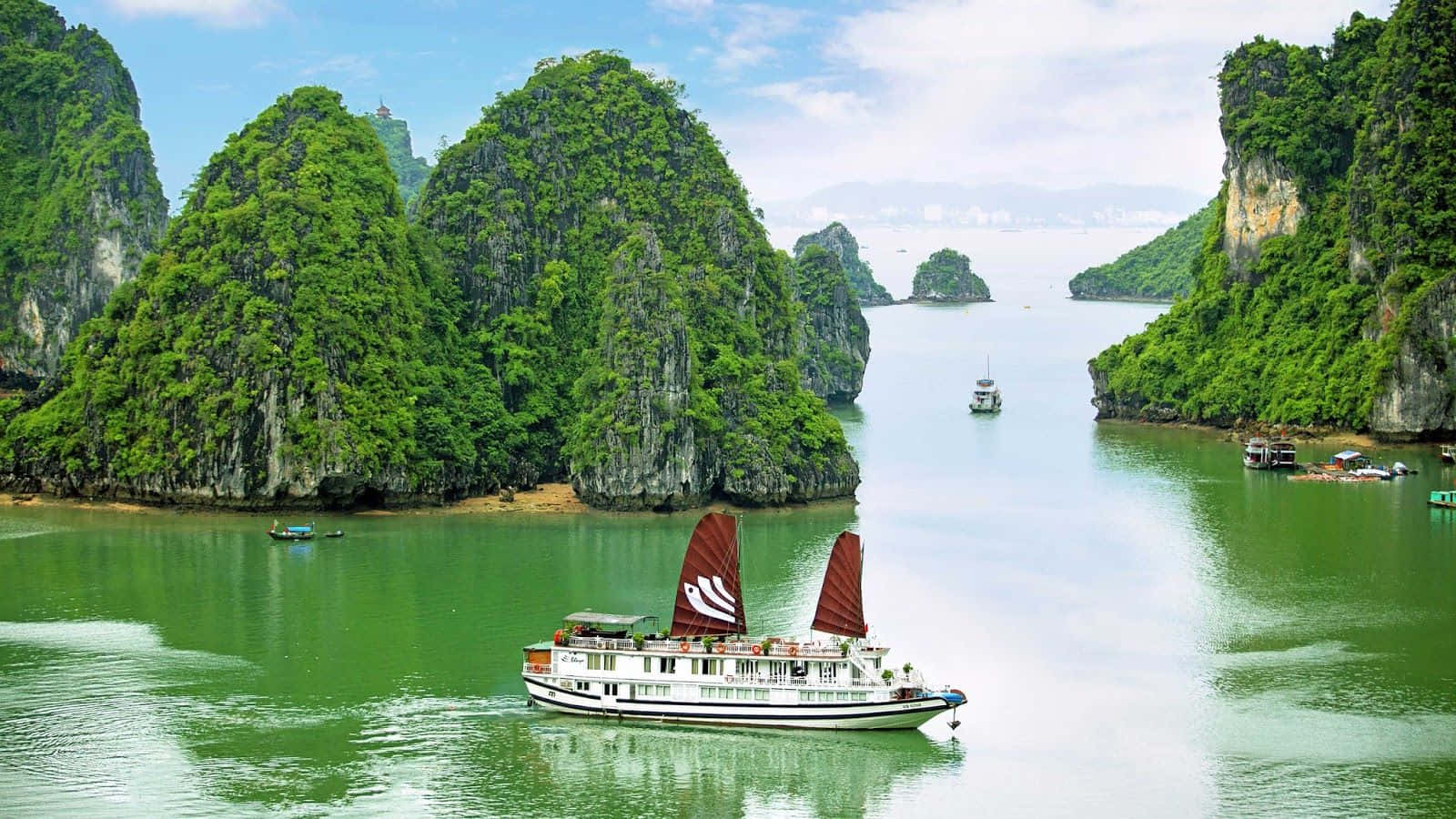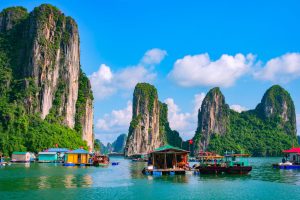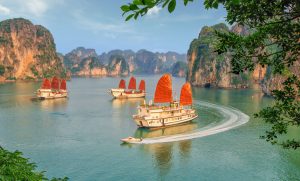- 24 July 2024
- 337
Halong Bay, Vietnam Stunning Natural Landscapes in 2024

Halong Bay, located in the northeastern region of Vietnam, has long been celebrated as one of the world’s most captivating natural wonders. As we step into 2024, this UNESCO World Heritage Site continues to mesmerize visitors with its stunning landscapes, rich biodiversity, and cultural significance. This article delves into the myriad aspects that make Halong Bay a must-visit destination in 2024, highlighting its geological marvels, ecological treasures, and the sustainable tourism initiatives that ensure its preservation for future generations.
Formation and Structure
Halong Bay’s geological history is a tale of millions of years of natural processes. The bay encompasses approximately 1,553 square kilometers and is dotted with nearly 2,000 limestone islets and karsts, each sculpted by the forces of nature. These formations are the result of complex geological activities including the slow erosion of limestone over millennia, tectonic shifts, and the influence of tropical weather patterns.

Iconic Islets and Caves
Among the myriad of islets, some stand out for their unique shapes and the legends associated with them. The “Fighting Cock Islet” and “Teapot Islet” are prime examples of how the local folklore intertwines with the natural landscape. Additionally, the bay is home to several extraordinary caves such as Sung Sot (Surprise Cave) and Thien Cung (Heavenly Palace Cave), which showcase stunning stalactites and stalagmites that captivate geologists and tourists alike.
Ecological Treasures
Halong Bay’s ecological diversity is as impressive as its geological features. The bay’s waters and islands host a wide array of flora and fauna, many of which are endemic to the region. The marine ecosystem is particularly rich, with coral reefs, mangroves, and seagrass beds providing habitats for numerous species of fish, mollusks, and crustaceans.
Conservation Efforts
In recent years, significant efforts have been made to preserve Halong Bay’s unique ecosystems. The Vietnamese government, in collaboration with international organizations, has implemented various conservation programs aimed at protecting the bay’s biodiversity. These initiatives include the establishment of marine protected areas, the promotion of sustainable fishing practices, and the regulation of tourism activities to minimize environmental impact.
Cultural Significance
Halong Bay is not only a natural wonder but also a region steeped in history and culture. Archaeological findings suggest that human habitation in the area dates back tens of thousands of years. The bay has been a vital part of Vietnamese culture, serving as a strategic location for trade and defense throughout history.
Local Communities
The local communities around Halong Bay have a rich cultural heritage that is deeply connected to the sea. Traditional fishing villages such as Cua Van and Vung Vieng offer a glimpse into the lives of the local people, who have adapted to the bay’s unique environment over generations. These communities play a crucial role in the preservation of the bay’s cultural and natural heritage.
Sustainable Tourism in 2024
As Halong Bay continues to attract tourists from around the world, there is a growing emphasis on sustainable tourism practices. In 2024, several eco-friendly initiatives are being implemented to ensure that tourism development does not come at the expense of the bay’s natural beauty and ecological integrity. These initiatives include promoting the use of electric boats, reducing plastic waste, and encouraging responsible travel behaviors among visitors.

Community-based Tourism
Community-based tourism is gaining traction as a sustainable model that benefits both the environment and the local population. By involving local communities in tourism activities, this approach helps to preserve cultural heritage while providing economic opportunities for residents. Visitors are encouraged to engage in activities such as homestays, traditional fishing, and cultural tours, which foster a deeper connection with the local culture and environment
Conclusion
Halong Bay, Vietnam: Stunning Natural Landscapes in 2024, remains a testament to the awe-inspiring beauty and ecological richness of our planet. As we continue to explore and appreciate this natural wonder, it is imperative that we do so with a commitment to sustainability and conservation. By embracing eco-friendly practices and supporting community-based tourism, we can ensure that Halong Bay’s stunning landscapes continue to inspire and enchant future generations.

